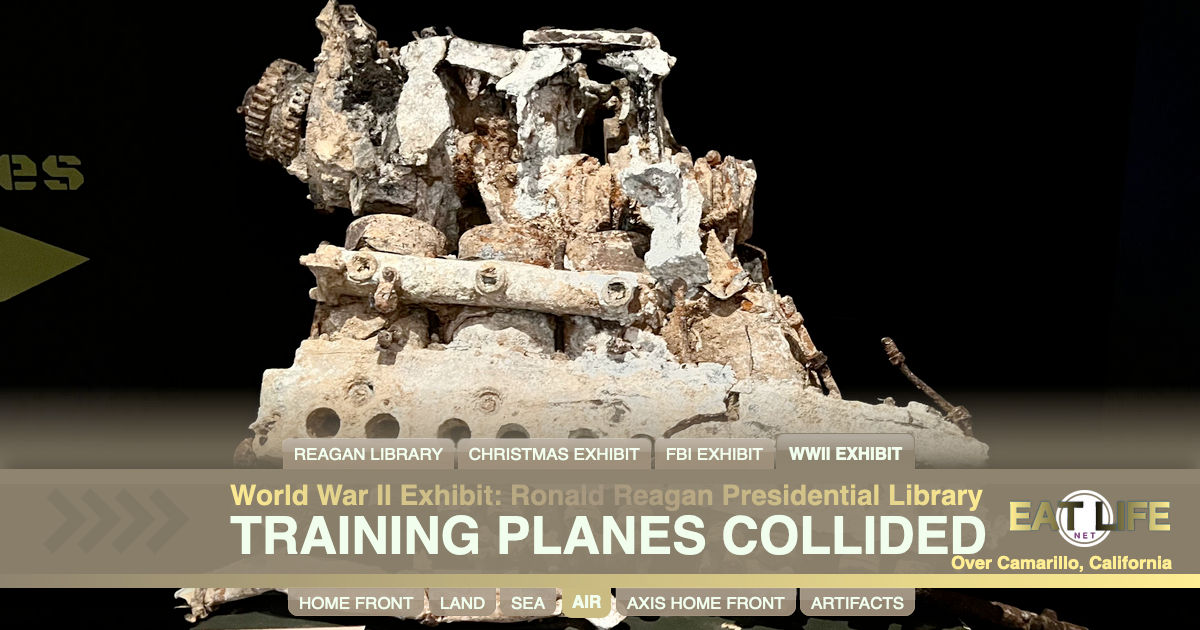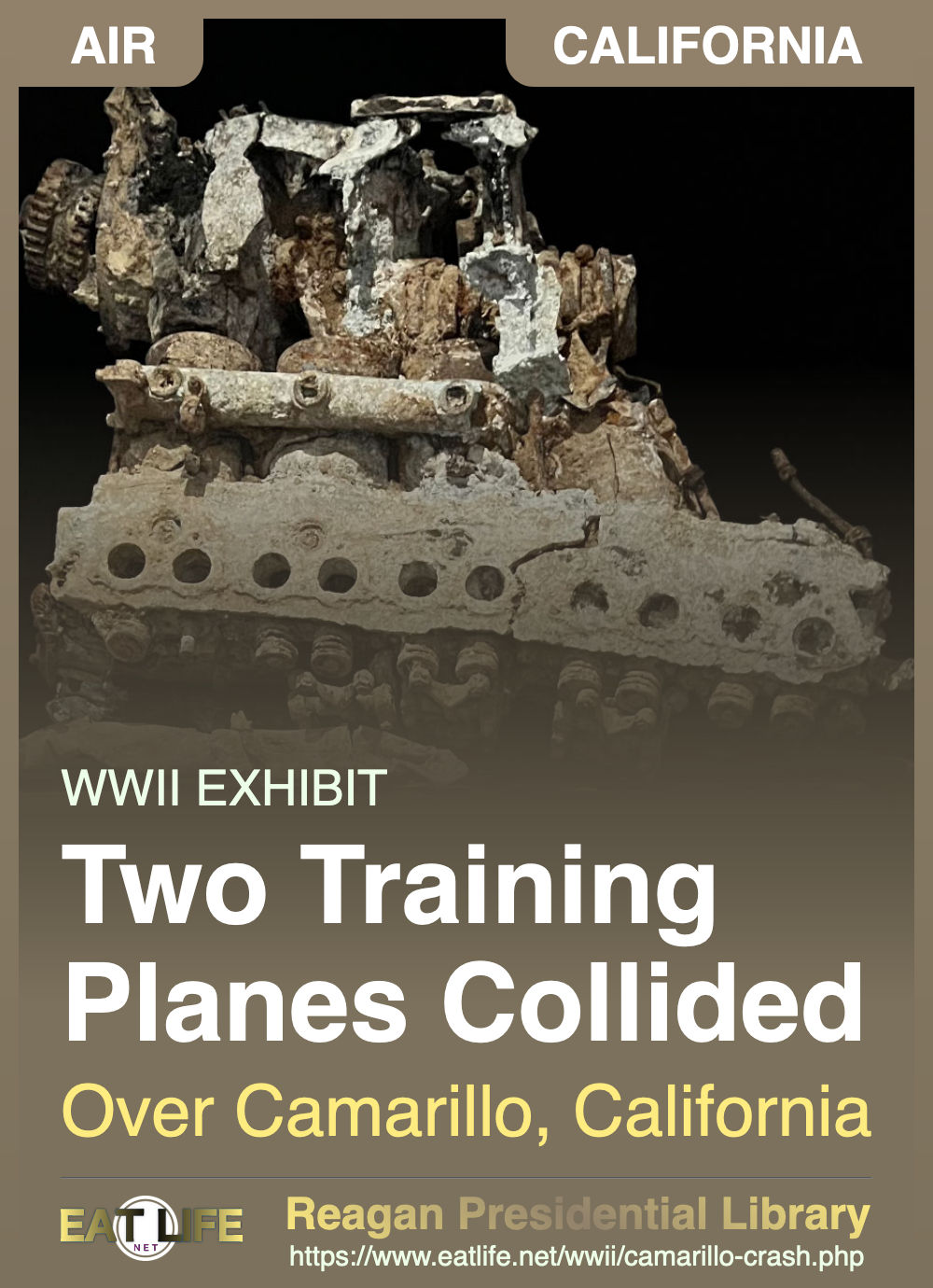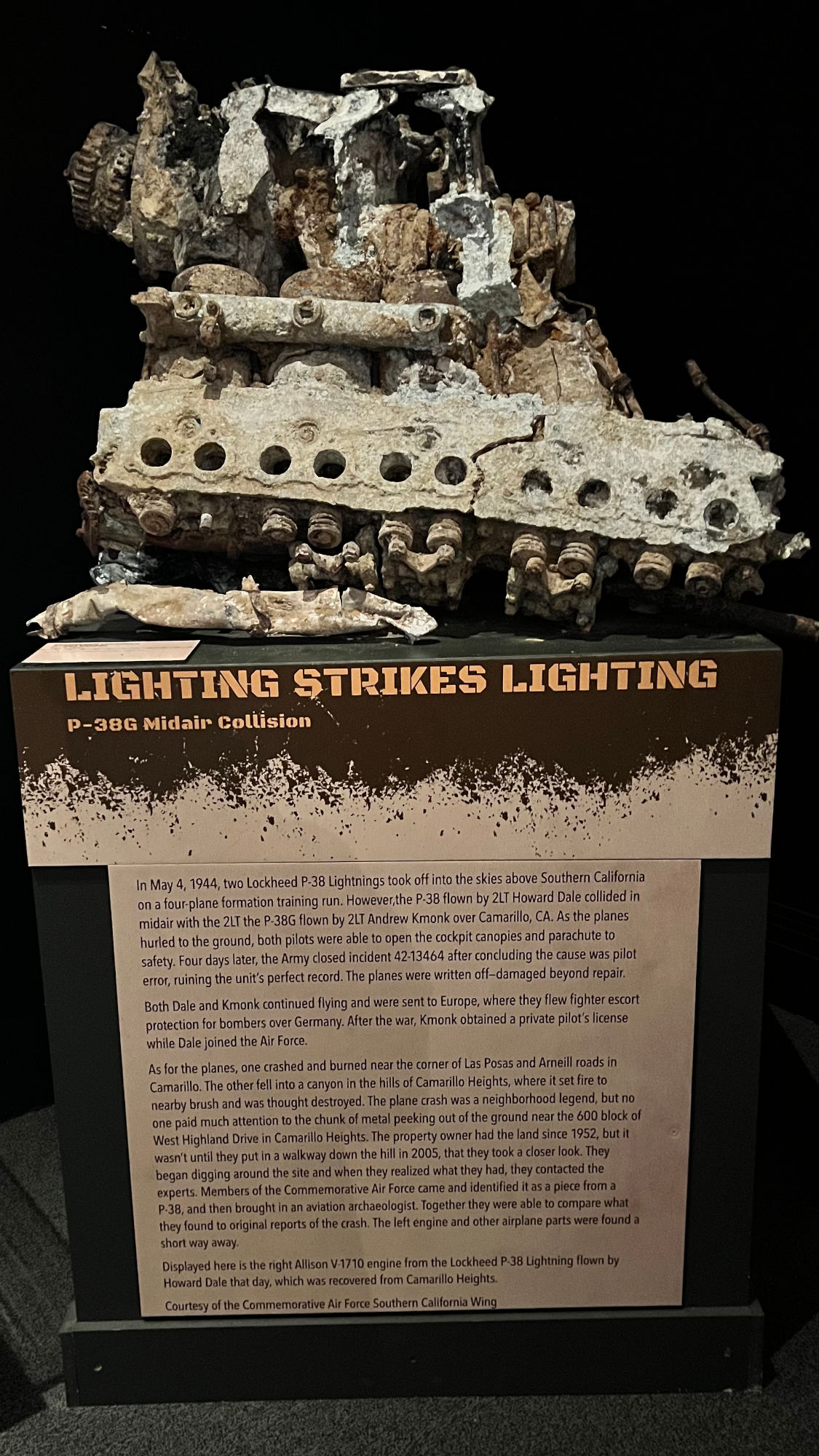
P-38G Midair Collision
In May 4, 1944, two Lockheed P-38 Lightnings took off into the skies above Southern California on a four-plane formation training run. However, the P-38 flown by 2LT Howard Dale collided in midair with the P-38G flown by 2LT Andrew monk over Camarillo, CA. As the planes hurled to the ground, both pilots were able to open the cockpit canopies and parachute to safety. Four days later, the Army closed incident 42-13464 after concluding the cause was pilot error, ruining the unit's perfect record. The planes were written off-damaged beyond repair.
Both Dale and Monk continued flying and were sent to Europe, where they flew fighter escort protection for bombers over Germany. After the war, Monk obtained a private pilot's license while Dale joined the Air Force.
As for the planes, one crashed and burned near the corner of Las Posas and Arneill roads in Camarillo. The other fell into a canyon in the hills of Camarillo Heights, where it set fire to nearby brush and was thought destroyed. The plane crash was a neighborhood legend, but no one paid much attention to the chunk of metal peeking out of the ground near the 600 block of West Highland Drive in Camarillo Heights. The property owner had the land since 1952, but it wasn't until they put in a walkway down the hill in 2005, that they took a closer look. They began digging around the site and when they realized what they had, they contacted the experts.
Members of the Commemorative Air Force came and identified it as a piece from a P-38, and then brought in an aviation archaeologist. Together they were able to compare what they found to original reports of the crash. The left engine and other airplane parts were found a short way away.
Displayed here is the right Allison V 1710 engine from the Lockheed P-38 Lightning flown by Howard Dale that day, which was recovered from Camarillo Heights.
Courtesy of the Commemorative Air Force Southern California Wing
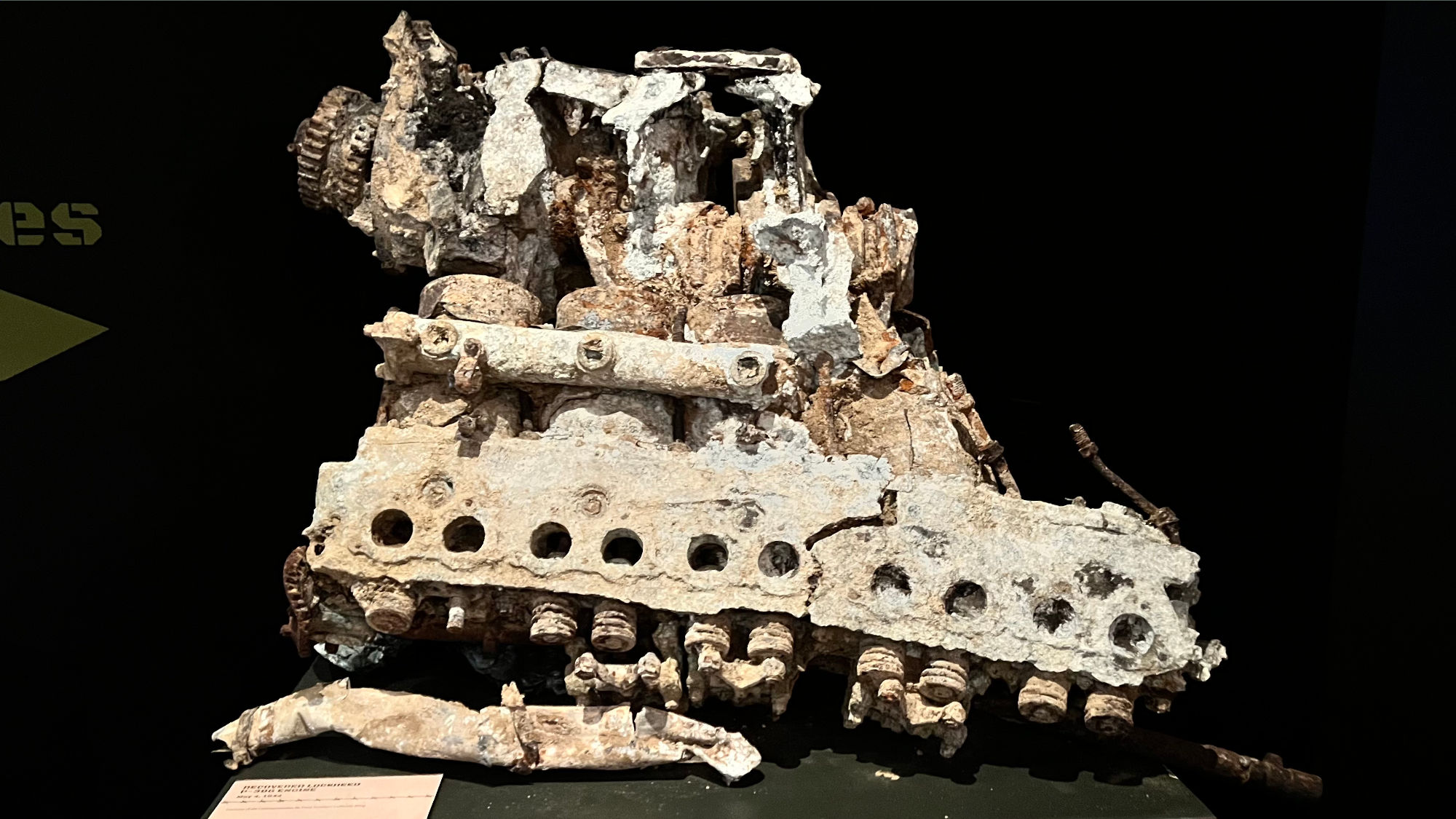
May 4, 1944
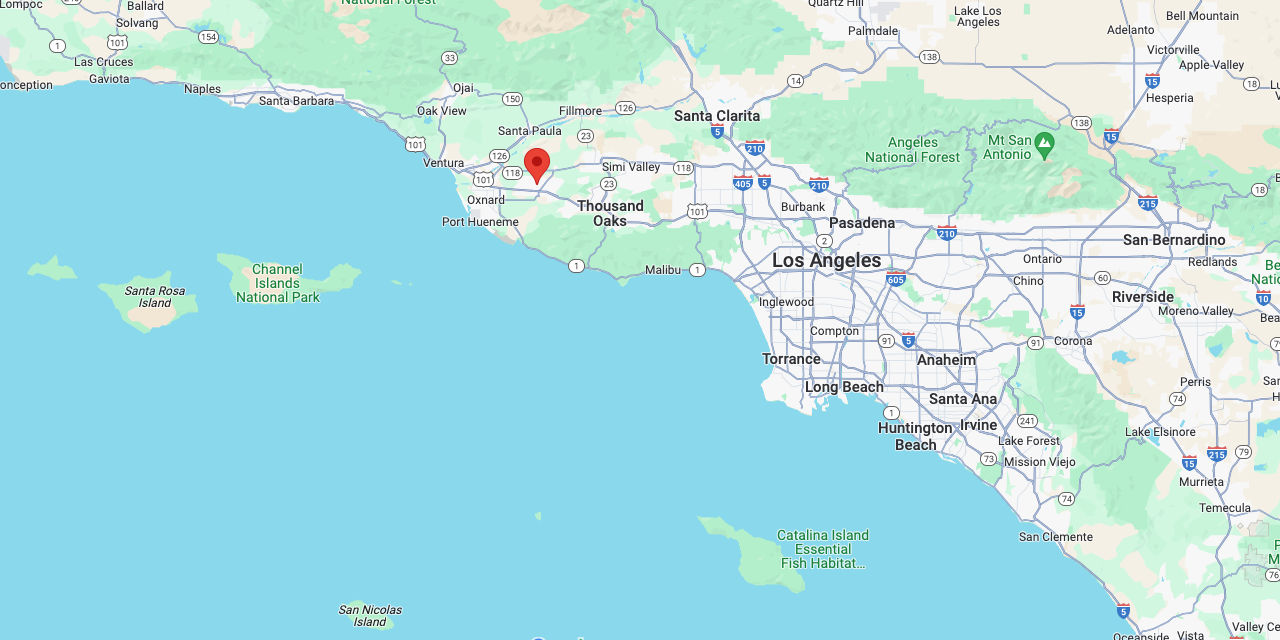
Arneill Road & Las Posas Road
google.com/maps/place/Arneill+Rd+%26+Las+Posas+Rd,+Camarillo,+CA+93010
WIKIPEDIAThe Lockheed P-38 Lightning
American single-seat, twin piston-engined fighter aircraft that was used during World War II.Developed for the United States Army Air Corps (USAAC) by the Lockheed Corporation, the P-38 incorporated a distinctive twin-boom design with a central nacelle containing the cockpit and armament. Along with its use as a general fighter, the P-38 was used in various aerial combat roles, including as a highly effective fighter-bomber, a night fighter, and a long-range escort fighter when equipped with drop tanks.
The P-38 was also used as a bomber-pathfinder, guiding streams of medium and heavy bombers, or even other P-38s equipped with bombs, to their targets. Used in the aerial reconnaissance role, the P-38 accounted for 90 percent of the aerial film captured over Europe. Although it was not designated a heavy fighter or a bomber destroyer by the USAAC, the P-38 filled those roles and more; unlike German heavy fighters crewed by two or three airmen, the P-38 with its lone pilot was nimble enough to compete with single-engine fighters.
- The P-38 was used most successfully in the Pacific and the China-Burma-India Theaters of Operations as the aircraft of America's top aces, Richard Bong (40 victories), Thomas McGuire (38 victories), and Charles H. MacDonald (27 victories).
- In the South West Pacific theater, the P-38 was the primary long-range fighter of United States Army Air Forces until the introduction of large numbers of P-51D Mustangs toward the end of the war.
Unusual for an early-war fighter design, both engines were supplemented by turbosuperchargers, making it one of the earliest Allied fighters capable of performing well at high altitudes. The turbosuperchargers also muffled the exhaust, making the P-38's operation relatively quiet. The Lightning was extremely forgiving in-flight and could be mishandled in many ways, but the rate of roll in early versions was low relative to other contemporary fighters; this was addressed in later variants with the introduction of hydraulically boosted ailerons.
The P-38 was the only American fighter aircraft in large-scale production throughout American involvement in the war, from the Attack on Pearl Harbor to Victory over Japan Day.






